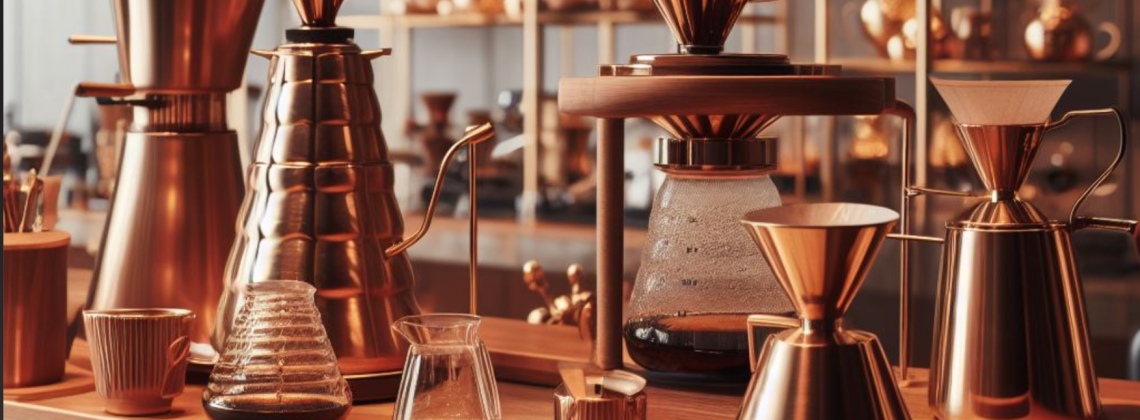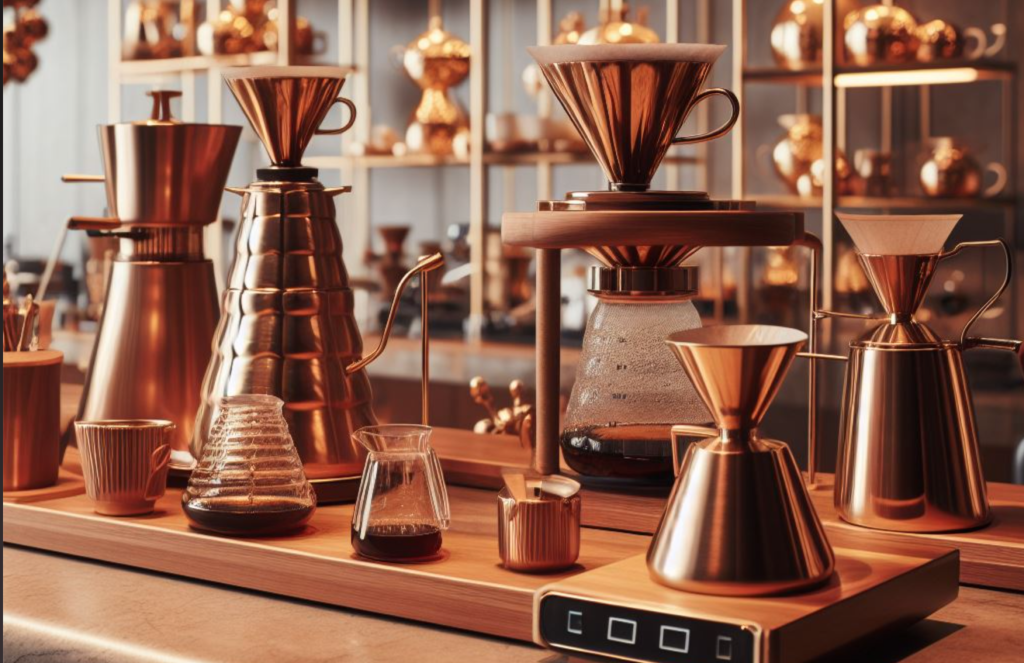

Starbucks Roasteries ask little of us but cash
Starbucks knows novelty will keep us coming in. A few years ago the Seattle coffee giant moved a destination roastery into what had been a flagship four-story Crate & Barrel store on a busy corner of Michigan Avenue, Chicago’s Magnificent Mile of destination shopping, with name-drop worthy neighbors like Nike and Burberry, Lululemon and Lego. The Mag Mile location is only the third Starbucks after the Seattle and New York locations to house a roastery. This year Starbucks debuted new coffee-themed experiences there. I wondered what could be filling up four floors, though I never wanted to know badly enough to wait in the line snaking around the block.
When a rainy recent Tuesday afternoon thinned the crowds, I confirmed that the first floor resembles regular Starbucks stores even as the space strains to belong elsewhere, Milan or Paris maybe. But the third floor boasts the “experiential coffee lab.” Experiences are made around a triangular bar installed with tools to process coffee: pour-over cones, pots, presses, siphons. Siphons draw all eyes, rows of glass bulbs and pipes as in a chemistry lab. I bought a single siphon coffee ($15), and the capable barista boiled water over a halogen light bulb. After the water coursed up a tube to the top glass, she poured in ground coffee and counted while stirring the slurry, then let liquid separate from grounds. What took the most time was boiling the water. I doubt that the manner water is made to reach its boiling point affects flavor. The manner frames the experience, though. The slow boil gave her time to explain that this method was devised in Germany in the 1830s, yielding a delicate tea-like brew.
The boiling took so long that two tour groups who had paid to be shown around Mag Mile Starbucks Reserve Roastery had a chance to stop and stare at the siphon station. Tour guides registered happy surprise to find somebody actually making a siphon coffee so they could do more than just walk groups past the row of attractive glassware. They delivered to their charges the spiel about nineteenth-century Germany while we all waited for the water to boil.
It was a strange spectacle, tempting awe at the wrong things. We were stimulated to wonder at how people did things in The Past, bless the hearts of those poor old-fashioned people. But whoever was siphoning coffee in nineteenth-century Germany was cutting-edge (not “artisanal”) and if that mechanism proved inferior to drip or press, it went the way of other supplanted technologies. Starbucks offering me $15 coffee by siphon is a little like Apple stores charging customers for the experiential privilege of using a car phone.
Starbucks initiated many into coffee snobbery decades back, teaching Americans that the brew in their diner cup or percolator wasn’t real coffee and beckoning us out for something better. Siphons press snobbery even further with the luster of European high culture. We should use what defenses we have against this snob appeal. Nineteenth-century U.S. writers urged Americans to stop aping European stuff and embrace their own. The coffee lab experience prompts more confused obeisance than can be swallowed in a serving, the old bowing to the new, the new bending over backward to an imagined past, science winking at craft.
Near the siphon counter, tourists in raincoats fidgeted during the guides’ spiel about Germany and gazed around. One woman, spotting a plastic cup of an iced drink capped with whipped cream on the opposite side of the bar, nodded in its direction and whispered to me, “That’s what I’m talking about.”
The iced cream-top latte brought me to my senses. I remembered where I had chafed at coffee culture before. In dramatic contrast, the iced latte reminded me of being at a coffee bar in Italy, standing around wondering whether what I was buying was what I actually wanted. For some years I have taught at a program for American college students in Italy. Each year students react much the same way to many of the same things. They eat gelato and exclaim over the pasta and the art, but what really gets them is the coffee. Students imagine that coffee belongs to Italy, that Italians have been best at it since of old, since Caesar, Dante, and Michelangelo, and that the guy behind the bar to whom they mumble “cappuccino” is gatekeeper of that tradition.
Some want the real thing. That is what our few euros are paying for—though we may get what we order with a dram of disapproval and coffee that goes down bitter. We even may halfway want a barista’s disapproval as validation of authenticity. The American patron may pay her coins and walk out satisfied but chastened, a new-world rube fumbling around antiquities and superior culture that will never be native. There are so many unspoken rules: ordering in one place and paying in another; drinking standing up at the counter; figuring out which beverage has a little milk and which has even less, which belongs to mornings and what is rude to drink in the afternoon. And the cups are so small!
I try to advise students that they don’t have to feel cowed by Italian coffee culture. Espresso drinks aren’t an ancient Italian secret, specialties passed from generations of grandmas like hand-rolled pasta or hand-cured olives. Espresso is an industrial product, gleaming metal and blasting steam power, a symbol of modernity like trains. I try to say, Italians didn’t invent coffee! Much coffee is a new world product! More, it’s a colonial product! The first machines to make specially Italian coffee were invented at start of the twentieth century. Between the wars came Illy and Gaggia and the crema on the cup. Coffee went from rarer to regular drink for many Italian men in World War I, and for many ordinary civilians not until the 1950s. Those stylish figures behind the counter? They come not from ancient Italian custom but from imitating American bartenders. Mussolini-nationalist pomp renamed them baristas.
A common problem for Americans approaching the espresso counter is putting cart ahead of horse, buying it without having developed a taste for it, wanting it for bragging rights rather than just drinking it because we like it. Italian baristas don’t blot out individual preferences—espresso was invented to make “express” cups for individual customers after all—but here the customer is not always right. American café-goers do not need to genuflect at coffee counters, but what they seek first for the prestige or authenticity they may come to like for the thing itself. Italian cafes ask us to learn to prefer something better than what we think we want.
The Starbucks coffee lab, in contrast, asks little of us but cash. At Starbucks, the barista in charge of the siphon is not teaching us to enjoy coffee made the best way; rather, she is delivering an experience. Nobody really wanted the thing at the end of the process.
There are lots of ways a coffee experience could become distinctively American in a good way. Starbucks started out schooling Americans on the bean’s nuances. The roastery lab sells some good beans, but having normalized dessert renamed as coffee, Starbucks does not mind if we would rather drink an iced latte. Actually it serves them better to sell us the dazzlement of the siphon plus that iced latte. The coffee and the experience are whatever the customer wishes to pay for, tailored to individual customers, whose tastes have been formed by that frosty cup with the whipped cream on top.
Agnes R. Howard teaches in Christ College, the honors college at Valparaiso University, and is author of Showing: What Pregnancy Tells Us about Being Human. She is a Contributing Editor for Current.
Image generated with AI ∙ November 26, 2023 at 1:55 PM